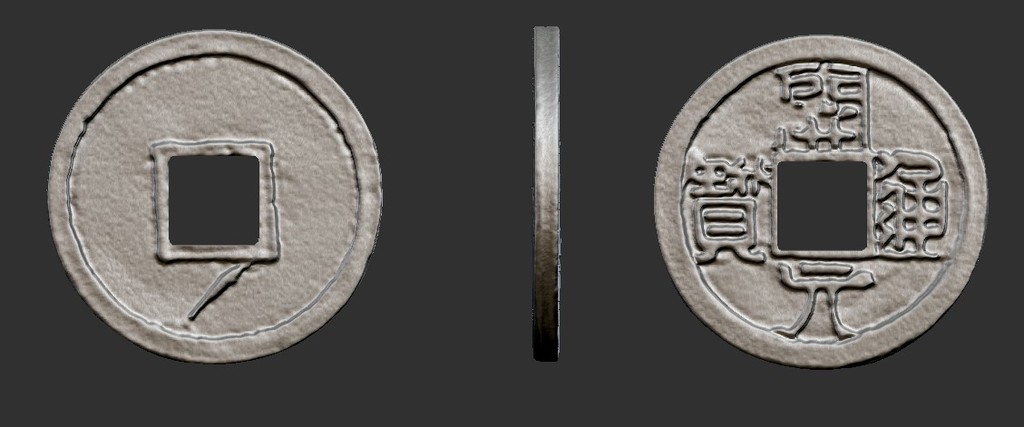
Chinese Tang Dynasty Coin
thingiverse
The Chinese used had shells well before 1,000 BCE as gifts, especially those bestowed upon the people from their aristocracy. Those were used in religious ceremonies and some hypothesize that imitation shells were used as a form of currency as far back as an estimated 700 BCE, around the time the bronze age ended in China. Knife money, or knife-shaped money began to be used in China in the centuries after 600 BCE. Spade money, or money that physically resembles a spade, began use some time after 640 BCE, which actually makes it far older than the stater, but it’s theorized they were used for funerary purposes and not yet as actual currency. They also used blocks of gold that were stamped by various governments during the Warring States period, from 400 BCE. These weren’t exactly coins, but showed a move to currency from a pure barter economy. Early round coins were introduced in the Zhou period, likely around 350 BCE, although those in the final years of the Qing still looked somewhat similar to the first coins over 2,500 years ago. One distinct feature was introduced by the Tang dynasty in 621 CE, which was four characters that indicated when the coin was minted and how it was meant to circulate. Notice the lack of iconography to show the power of those who issued the coins, though. The Chinese influenced the use of coins throughout the rest of asia as well. 960 CE was around the time Vietnam issued cash coins, which resembled the Chinese coins. Korea also had knife coins as far back as the 3rd century BCE and thought to have been brought by Chinese settlers. They began to issue cash coins from 108 BCE. Japan introduced the Fuhonsen in 708 CE, based on previous Chinese coins. Progress is hard. The Mongols had printed bank notes that were initially rejected by the public, an innovation they seem to have picked up from the Chinese. By the late 1,200s CE the Ilkhanate ruler Gaykhatu ordered the population to use them; they did not. A Sultan in Azerbaijan was even killed as a reaction to a similar order. However, in the meantime, after he established the unified Mongol Empire, Chinggis Khan released the Sukhes, or gold and silver coins. As the Mongols established dynasties in China and trade routes were established not just between tribes, but between the Mongols and the Mughals and others, they cross-polinated cultures with new ideas. In 1227, his regime added the first state-backed paper money, or banknote. This had evolved since merchants used paper as a receipt of deposit in the 7th century during the Tang dynasty and Islamic explorers had noticed cloth-based receipts had been used in 960. Within a few decades began to be introduced into Europe. The move from barter to cash-based economies allowed for simpler taxation, increased standardization, and more consistent trade. The banknotes further obfuscated the concept of wealth and the next major reform to the financial system came when banks began to trade through central banks in the 1600s and then when permanent banknotes began to be used as currency in the 1700s, a practce that spread as central banks issued paper money as legal tender in the 1800s – with the gold standard forming the basis for global exchange from the 1870s to the 1920s – and fiat money replacing that afterwards. The Chinese dynasties hadn’t needed a central bank in the way European powers did until 1905, when the first central bank was established in China, initially called the Bank of the Board of Revenue and later the Great Qing Government Bank. Six years later the Qing empire, the last dynasty of China, fell.
With this file you will be able to print Chinese Tang Dynasty Coin with your 3D printer. Click on the button and save the file on your computer to work, edit or customize your design. You can also find more 3D designs for printers on Chinese Tang Dynasty Coin.
